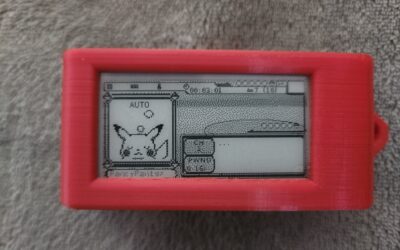Hold onto your antennas, folks, because we’re about to dive into the spectral world of Ghost ESP, a firmware that transforms your humble ESP32 microcontroller into a formidable tool for wireless network exploration and security testing. If you’re itching to probe the depths of Wi-Fi and Bluetooth Low Energy (BLE) networks, this one’s for you.

What Is Ghost ESP?
Ghost ESP is an open-source firmware designed to breathe new life into ESP32 devices, turning them into versatile wireless testing platforms. Developed by the enigmatic Spooks4576,
it offers a suite of features tailored for penetration testing and educational purposes. Think of it as the Swiss Army knife of wireless network analysis, compacted into a device that fits in the palm of your hand.
Key Features That Send Chills Down Your Spine
Ghost ESP isn’t just a one-trick pony; it’s packed with tools that make it a standout in the realm of wireless testing:
-
Wi-Fi Analysis: Scan and identify nearby access points and stations, complete with Organizationally Unique Identifier (OUI) matching and real-time monitoring.
-
Packet Capture: Snag probe requests, beacons, deauthentication packets, WPS, EAPOL, and raw Wi-Fi packets, all saved in PCAP format for your analytical pleasure.
-
Beacon Operations: Generate custom beacon frames in random, rickroll, or access point list modes, useful for network testing and, let’s be honest, a bit of mischief.
-
BLE Toolkit: Detect BLE spam, track devices like AirTags, and capture raw BLE packets, giving you a comprehensive view of the BLE landscape.
-
Wardriving: Equip your device with GPS capabilities to log Wi-Fi and BLE networks on the move, creating detailed network maps.
-
Evil Portal: Craft customizable captive portals with online/offline modes and domain spoofing, perfect for testing network security measures.
-
Network Tools: Access features like DIAL/Chromecast control, network printer access, and TP-Link device management, expanding your testing toolkit.
-
Security Testing: Perform WPS scanning and skimmer detection, among other security assessments, to evaluate network vulnerabilities.
-
Display Features: For devices with displays, enjoy built-in games, a music visualizer, and RGB rave mode, because why not have a little fun while you’re at it?

Use Cases: From Pen Testers to Curious Cats
Ghost ESP isn’t just for the seasoned penetration tester; it’s a valuable tool for anyone interested in wireless networks:
-
Penetration Testing: Evaluate the security of wireless networks by identifying vulnerabilities and testing defenses.
-
Educational Purposes: Learn about wireless protocols, network security, and ethical hacking in a hands-on manner.
-
Network Troubleshooting: Diagnose network issues, optimize performance, and ensure your network is secure from potential threats.
A Word to the Wise
Before you embark on your spectral journey with Ghost ESP, remember that this tool is intended for educational and ethical security research. Unauthorized or malicious use is illegal. Always obtain proper permissions before conducting any network tests.
Conclusion: Embrace the Ghost
Ghost ESP is more than just firmware; it’s a gateway to exploring the unseen corners of wireless networks. Whether you’re a penetration tester, a student of cybersecurity, or just a curious soul, Ghost ESP offers the tools and flexibility to delve deep into the world of wireless communication. So, flash that ESP32, fire up Ghost ESP, and let the spectral adventures begin.
If you are looking to pickup a Ghost ESP on the CYD platform, we have you covered right here!
We also carry cases for ESP32 CYD Boards right here!





0 Comments